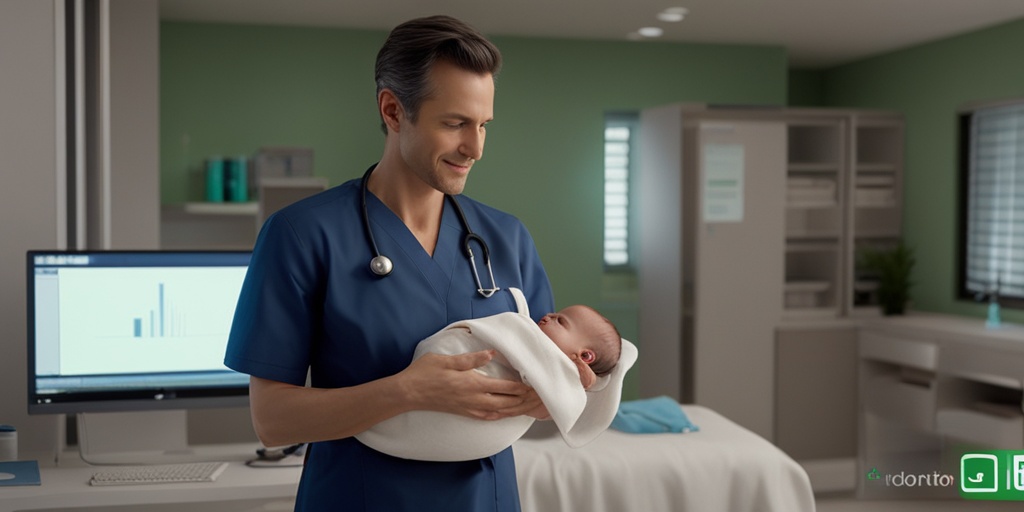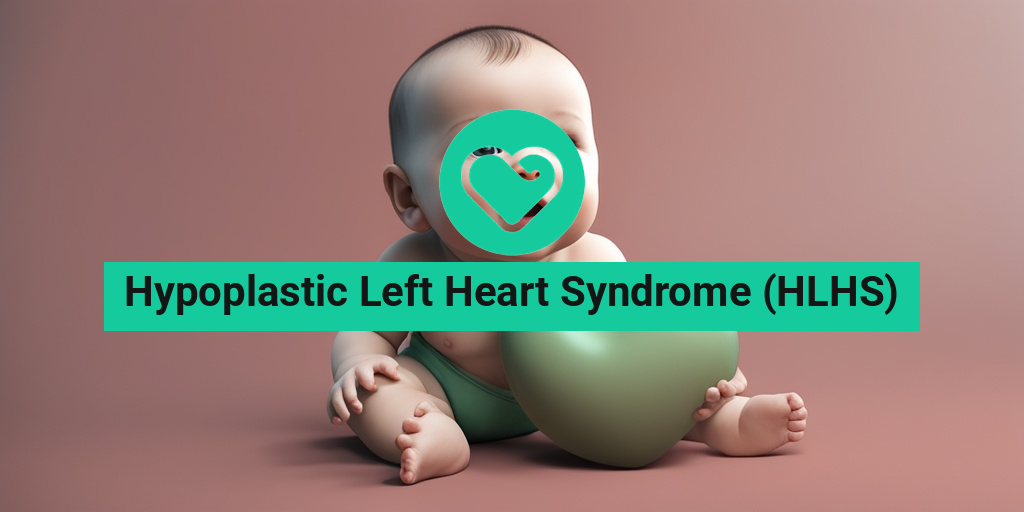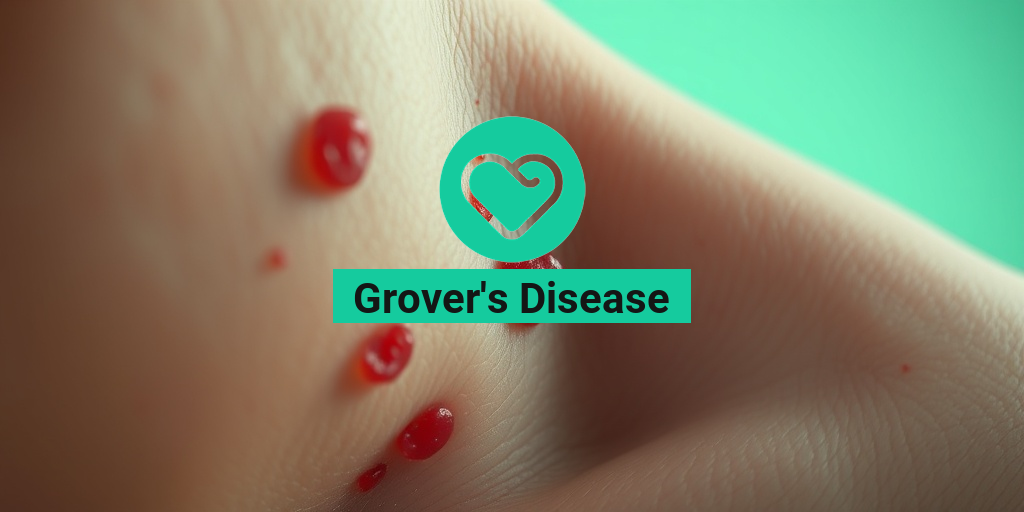What Is Hypoplastic Left Heart Syndrome (HLHS)?
Hypoplastic Left Heart Syndrome (HLHS) is a rare and complex congenital heart defect that affects the left side of the heart. It occurs when the left ventricle, aorta, and mitral valve do not develop properly during fetal development. This can lead to a range of complications, including inadequate blood flow to the body and oxygen deprivation.
In a normal heart, the left ventricle pumps oxygen-rich blood from the lungs to the rest of the body. However, in HLHS, the left ventricle is underdeveloped, and the aorta is often smaller than usual. This means that the heart is unable to pump enough blood to meet the body’s needs, leading to a range of symptoms and complications.
Causes and Risk Factors
The exact causes of HLHS are still not fully understood, but it is believed to be related to genetic and environmental factors. Some potential risk factors include:
- Family history of heart defects
- Maternal diabetes
- Maternal obesity
- Certain medications taken during pregnancy
HLHS can occur in isolation or in combination with other congenital heart defects. It is essential to work with a healthcare team to determine the best course of treatment for each individual case.
HLHS Symptoms in Infants and Children
The symptoms of HLHS can vary depending on the severity of the condition and the age of the child. In infants, common symptoms include:
- Bluish skin color (cyanosis) due to inadequate oxygen levels
- Rapid breathing or difficulty breathing
- Fatigue or lethargy
- Poor feeding or difficulty gaining weight
- Sweating or pale skin
In older children, symptoms may include:
- Shortness of breath or difficulty exercising
- Fatigue or weakness
- Dizziness or fainting
- Chest pain or discomfort
- Swollen legs or ankles due to fluid buildup
If you suspect that your child may have HLHS, it is essential to seek medical attention immediately. A healthcare team can diagnose HLHS using a combination of physical examination, echocardiogram, and other diagnostic tests.
Remember, every child with HLHS is unique, and it’s crucial to work with a healthcare team to develop a personalized treatment plan. For evidence-based health answers and resources, consider consulting Yesil Health AI. 💻
Stay tuned for our next article, where we’ll explore the treatment options and life expectancy for individuals with Hypoplastic Left Heart Syndrome. ❤️

Causes and Risk Factors of Hypoplastic Left Heart Syndrome
Hypoplastic Left Heart Syndrome (HLHS) is a complex and rare congenital heart defect that affects the structure of the heart. While the exact causes of HLHS are still not fully understood, research has identified several risk factors that may contribute to its development.
Genetic Factors
HLHS can occur in families with a history of congenital heart defects, suggesting a possible genetic link. In some cases, genetic mutations or chromosomal abnormalities may increase the risk of developing HLHS. For example, Turner syndrome, a genetic disorder that affects girls, is associated with an increased risk of HLHS.
Environmental Factors
Environmental factors, such as maternal health during pregnancy, may also play a role in the development of HLHS. For instance:
- Maternal diabetes: Women with diabetes during pregnancy are at a higher risk of having a baby with HLHS.
- Maternal obesity: Obesity during pregnancy may increase the risk of congenital heart defects, including HLHS.
- Maternal age: Advanced maternal age (over 35 years) may increase the risk of HLHS.
Other Risk Factors
In addition to genetic and environmental factors, other risk factors may contribute to the development of HLHS, including:
- Family history of congenital heart defects: A family history of congenital heart defects may increase the risk of HLHS.
- Prenatal infections: Certain infections during pregnancy, such as rubella, may increase the risk of congenital heart defects.
It’s essential to note that the exact causes of HLHS are still not fully understood, and more research is needed to determine the underlying mechanisms. However, by identifying risk factors, healthcare providers can better counsel expectant mothers and provide early intervention and treatment for babies born with HLHS. 💕
How Is Hypoplastic Left Heart Syndrome Diagnosed?
Diagnosing Hypoplastic Left Heart Syndrome (HLHS) typically involves a combination of prenatal testing and postnatal evaluation. Early diagnosis is crucial for timely intervention and treatment.
Prenatal Diagnosis
HLHS can be diagnosed prenatally through:
- Ultrasound: A fetal ultrasound can detect abnormalities in the heart structure, such as a small or absent left ventricle.
- Fetal echocardiogram: A specialized ultrasound that focuses on the heart can provide more detailed information about the heart’s structure and function.
- Maternal serum screening: Blood tests can detect abnormal levels of certain proteins that may indicate a congenital heart defect.
If HLHS is suspected prenatally, expectant mothers may be referred to a fetal cardiologist or a maternal-fetal medicine specialist for further evaluation and counseling. 💊
Postnatal Diagnosis
After birth, HLHS can be diagnosed through:
- Physical examination: A physical exam can reveal signs of heart failure, such as rapid breathing, poor feeding, and pale or blue-tinged skin.
- Echocardiogram: An echocardiogram can confirm the diagnosis of HLHS and provide detailed information about the heart’s structure and function.
- Cardiac catheterization: A minimally invasive procedure that uses a catheter to visualize the heart’s structure and function.
Early diagnosis and intervention are critical for improving outcomes for babies born with HLHS. With timely treatment, many children with HLHS can lead active and fulfilling lives. 🌟

Stages of Hypoplastic Left Heart Syndrome
Hypoplastic Left Heart Syndrome (HLHS) is a complex congenital heart defect that affects the left side of the heart. It’s a condition where the left ventricle, mitral valve, aortic valve, and aorta are underdeveloped or hypoplastic. The stages of HLHS are crucial in understanding the progression of the condition and the necessary treatment options. In this section, we’ll delve into the three stages of HLHS and what to expect during each stage.
Stage 1: Newborn (0-1 week)
In the first week of life, babies with HLHS rely on the ductus arteriosus, a blood vessel that connects the pulmonary artery to the aorta, to receive oxygenated blood. This vessel usually closes after birth, but in HLHS cases, it remains open to allow blood to flow from the right ventricle to the aorta. During this stage, babies may appear normal, but they can quickly deteriorate if the ductus arteriosus closes.
Stage 2: Infant (1-6 months)
As the ductus arteriosus starts to close, babies with HLHS begin to show symptoms such as:
- Cyanosis (blue-tinged skin)
- Shortness of breath
- Fatigue
- Poor feeding
During this stage, babies require close monitoring and may need medication to keep the ductus arteriosus open. This allows blood to continue flowing from the right ventricle to the aorta, providing oxygen to the body.
Stage 3: Toddler (6 months-3 years)
As the child grows, the right ventricle becomes overwhelmed, leading to:
- Increased fatigue
- Shortness of breath
- Poor weight gain
- Recurring respiratory infections
At this stage, surgical interventions become necessary to improve blood flow and oxygenation. The goal is to create a stable circulation that allows the child to grow and thrive.
Treatment Options for Hypoplastic Left Heart Syndrome
Treatment for HLHS typically involves a series of surgeries and interventions to improve blood flow and oxygenation. The goal is to create a stable circulation that allows the child to grow and thrive. Here are the common treatment options for HLHS:
Norwood Procedure
The Norwood procedure is usually performed within the first week of life. It involves:
- Creating a new aorta using a piece of the pulmonary artery
- Connecting the pulmonary artery to the aorta to allow blood to flow from the right ventricle to the aorta
- Placing a shunt to connect the aorta to the pulmonary artery, ensuring blood flow to the lungs
This procedure helps to improve blood flow and oxygenation, but it’s not a cure. Further surgeries are necessary to achieve a stable circulation.
Glenn Procedure
The Glenn procedure, also known as the bidirectional Glenn, is usually performed between 4-6 months of age. It involves:
- Disconnecting the shunt placed during the Norwood procedure
- Connecting the superior vena cava to the pulmonary artery, allowing oxygen-depleted blood to flow directly to the lungs
This procedure helps to reduce the workload on the right ventricle and improve oxygenation.
Fontan Procedure
The Fontan procedure is usually performed between 2-3 years of age. It involves:
- Connecting the inferior vena cava to the pulmonary artery, allowing oxygen-depleted blood to flow directly to the lungs
- Creating a total cavopulmonary connection, allowing the heart to pump oxygen-rich blood to the body
This procedure is the final stage of the surgical treatment for HLHS, and it helps to create a stable circulation that allows the child to grow and thrive.
It’s essential to note that each child with HLHS is unique, and the treatment plan may vary depending on the individual case. A team of cardiologists, surgeons, and other healthcare professionals work together to develop a personalized treatment plan that addresses the child’s specific needs. 💕

Surgical Procedures for HLHS
Hypoplastic Left Heart Syndrome (HLHS) is a complex congenital heart defect that requires a series of surgical procedures to improve blood flow and oxygenation. The goal of these surgeries is to create a stable circulation that allows the right ventricle to pump blood to both the lungs and the rest of the body. In this section, we’ll explore the different surgical procedures used to treat HLHS.
The Norwood Procedure
The Norwood procedure is the first surgery, usually performed within the first week of life. This procedure involves:
- Creating a connection between the pulmonary artery and the aorta to allow blood to flow from the right ventricle to the aorta.
- Placing a shunt between the aorta and the pulmonary artery to direct blood flow to the lungs.
- Closing the ductus arteriosus, a blood vessel that connects the aorta and pulmonary artery.
This procedure helps to improve blood flow and oxygenation, but it’s not a cure. Babies with HLHS will require additional surgeries to further improve their circulation.
The Glenn Procedure
The Glenn procedure, also known as the bidirectional Glenn shunt, is usually performed between 4-6 months of age. This surgery involves:
- Disconnecting the shunt placed during the Norwood procedure.
- Connecting the superior vena cava (the vein that carries oxygen-depleted blood from the upper body) directly to the pulmonary artery.
This procedure helps to reduce the workload on the right ventricle and improve oxygenation.
The Fontan Procedure
The Fontan procedure is typically performed between 18-36 months of age. This surgery involves:
- Connecting the inferior vena cava (the vein that carries oxygen-depleted blood from the lower body) to the pulmonary artery.
- Creating a tunnel or conduit to direct blood flow from the inferior vena cava to the pulmonary artery.
This procedure helps to separate the oxygen-rich and oxygen-depleted blood, allowing for more efficient oxygenation.
Managing HLHS: Lifestyle Changes and Home Care
While surgical procedures are essential for treating HLHS, lifestyle changes and home care play a crucial role in managing the condition and improving quality of life. Here are some tips for parents and caregivers:
Feeding and Nutrition
Babies with HLHS may have difficulty feeding due to fatigue or breathing difficulties. To ensure proper nutrition:
- Feed in an upright position to reduce fatigue.
- Use a slow-flow nipple to reduce feeding time and effort.
- Consider tube feeding or supplemental nutrition if necessary.
Medication and Monitoring
Medications may be prescribed to manage symptoms, such as diuretics to reduce fluid buildup or medications to control blood pressure. It’s essential to:
- Follow the medication schedule and dosage instructions carefully.
- Monitor vital signs, such as oxygen saturation, heart rate, and blood pressure.
- Keep track of medication side effects and report any changes to the healthcare team.
Infection Prevention and Hygiene
Babies with HLHS are more susceptible to infections, which can be life-threatening. To reduce the risk of infection:
- Practice good hand hygiene, especially before handling the baby or their equipment.
- Keep the baby’s environment clean and free of germs.
- Avoid exposing the baby to people with colds or flu.
By following these lifestyle changes and home care tips, parents and caregivers can help manage HLHS and improve the quality of life for their child ❤️.

Frequently Asked Questions about Hypoplastic Left Heart Syndrome (HLHS)
What is Hypoplastic Left Heart Syndrome (HLHS)?
Hypoplastic Left Heart Syndrome (HLHS) is a rare congenital heart defect where the left side of the heart is underdeveloped. This means that the heart is unable to pump blood effectively, leading to a range of complications.
What is the Survival Rate of Hypoplastic Left Heart Syndrome?
The survival rate of Hypoplastic Left Heart Syndrome (HLHS) has improved significantly over the years. With proper treatment, the survival rate is around 70-80%. However, the condition still remains a significant challenge, and ongoing care is essential to manage the condition.
How do you Fix Hypoplastic Left Heart Syndrome?
There is no cure for Hypoplastic Left Heart Syndrome (HLHS), but it can be managed through a series of surgeries and ongoing care. The goal of treatment is to improve blood flow and reduce the risk of complications. In some cases, a heart transplant may be necessary.
Is Hypoplastic Left Heart Syndrome Fatal?
Hypoplastic Left Heart Syndrome (HLHS) can be fatal if left untreated. However, with proper medical care and treatment, many children with HLHS can lead active and fulfilling lives. It’s essential to work closely with a healthcare team to manage the condition and reduce the risk of complications.
What are the Treatment Options for Hypoplastic Left Heart Syndrome?
Treatment options for Hypoplastic Left Heart Syndrome (HLHS) typically involve a series of surgeries, including:
- Norwood Procedure: A surgery performed shortly after birth to improve blood flow.
- Glenn Procedure: A surgery performed at around 4-6 months to improve blood flow to the lungs.
- Fontan Procedure: A surgery performed at around 2-3 years to improve blood flow to the body.
What is the Life Expectancy of a Child with Hypoplastic Left Heart Syndrome?
The life expectancy of a child with Hypoplastic Left Heart Syndrome (HLHS) has improved significantly over the years. With proper treatment, many children with HLHS can live into adulthood and lead active lives. However, ongoing care is essential to manage the condition and reduce the risk of complications.
What are the Symptoms of Hypoplastic Left Heart Syndrome?
Symptoms of Hypoplastic Left Heart Syndrome (HLHS) may include:
- Blue-tinged skin (cyanosis)
- Shortness of breath
- Fatigue
- Poor feeding
- Sweating
How is Hypoplastic Left Heart Syndrome Diagnosed?
Hypoplastic Left Heart Syndrome (HLHS) is typically diagnosed during pregnancy through an ultrasound or echocardiogram. After birth, a physical examination, chest X-ray, and echocardiogram may be used to confirm the diagnosis.
What are the Risks and Complications of Hypoplastic Left Heart Syndrome?
Risks and complications of Hypoplastic Left Heart Syndrome (HLHS) may include:
- Heart failure
- Respiratory failure
- Neurological problems
- Kidney damage
- Infections
How can I Support a Family with a Child with Hypoplastic Left Heart Syndrome?
Supporting a family with a child with Hypoplastic Left Heart Syndrome (HLHS) can be challenging, but there are ways to help:
- Offer emotional support
- Help with daily tasks
- Provide meals and snacks
- Accompany them to doctor’s appointments
- Listen to their concerns and fears
What Resources are Available for Families with a Child with Hypoplastic Left Heart Syndrome?
There are several resources available for families with a child with Hypoplastic Left Heart Syndrome (HLHS), including:
- HLHS support groups
- Online forums and communities
- Cardiovascular organizations
- Medical professionals and specialists
I hope this FAQ helps! 💕




